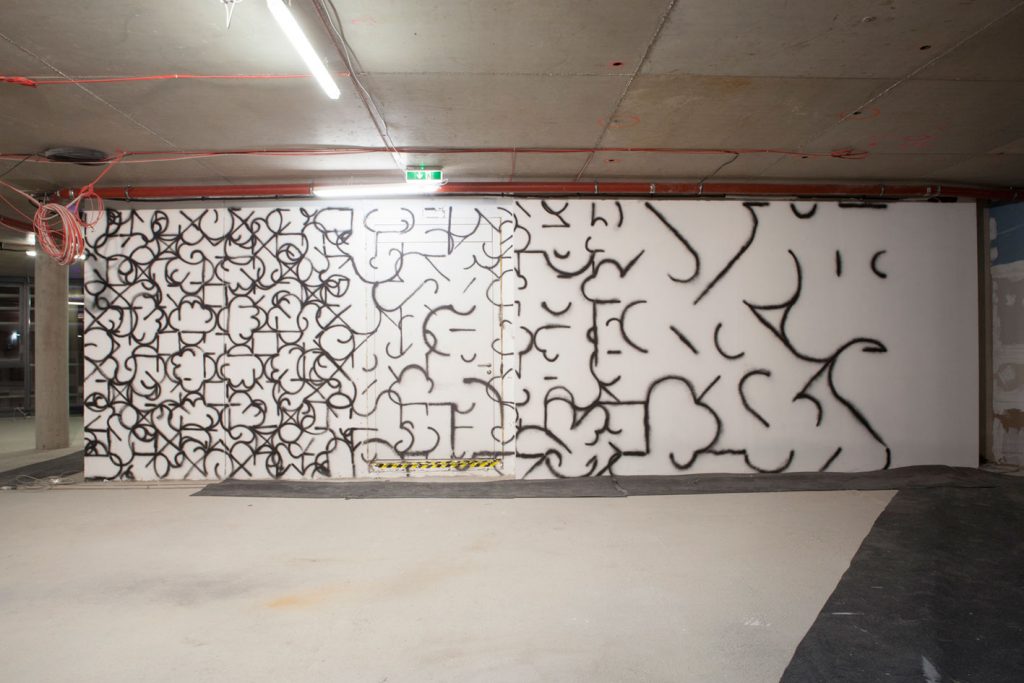This extraordinary exhibition venue with a view of the Hofgarten, among other things, is located in one of Düsseldorf's most important buildings in recent times. Designed by star architect Daniel Libeskind, the Kö-Bogen is seen as the new centrepiece in the Königsallee and Hofgarten ensemble. As an "implant", it is to replace the former Gründerzeit quarter, which has been an empty space at the upper end of Königsallee since the destruction of the city during the war. The elegantly shaped curved line of the building in combination with the trees and shrubs planted vertically in the façade perfectly closes the urban "gap" of Schadowplatz.
5 February – 16 March 2014
Venue:
Kö-Bogen, 4th floor, Haus Hofgarten, Königsallee 2, 40212 Düsseldorf.
Participating artists:
Georg Herold, Benjamin Houlihan, Liv Schwenk, Harald Klingelhöller, Jörg Gelbke, Henry Staschik, Tal R, Ali Altin, Jochen Goerlach, Taka Kagitomi, Chris Reinecke, Mareike Foecking, David Lieske, Katharina Sieverding, Pola Sieverding, Pia Stadtbäumer, Max Frisinger, Natalia Stachon
Curators:
Dr. Gregor Jansen and Pia Witzmann
With the kind support of:
In order to do justice to this exhibition venue, an exhibition idea was needed that would give art space and at the same time involve it in experimental processes: In the exhibition “Blended Generations”, the invited internationally renowned artists will seek cooperation with young artists alongside their own artistic work. Each of the invited artists will select several artists with a view to collaboration. In this, the invited artists will have a completely free hand. The result of this artistic meeting will be revealed through an extremely exciting process and will reveal to the exhibition visitor a new, multi-faceted approach to artistic means.
Thus, the collaboration can lead to very different constellations: Works that stand next to each other and only indirectly refer to each other, forming autonomous works, so to speak. Or works that correspond with each other, that are related to each other; installations whose authorship as a joint work can no longer be traced in detail – many things will be realised in this exhibition in an immensely exciting and unpredictable way, revealing a panorama of artistic approaches to the visitor. In addition to sculpture, which will certainly be a main focus in these architecturally impressive rooms, the fields of photography, installation and video will also play an important role, and painting could also become part of this artistic diversity.





























